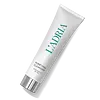What's inside
What's inside
 Key Ingredients
Key Ingredients

 Benefits
Benefits

 Concerns
Concerns

 Ingredients Side-by-side
Ingredients Side-by-side

Water
Skin ConditioningPropanediol
SolventDecyl Glucoside
CleansingCoco-Glucoside
CleansingPentylene Glycol
Skin ConditioningSalicylic Acid
MaskingGluconolactone
Skin ConditioningXanthan Gum
EmulsifyingArginine
MaskingBetaine
HumectantLactobionic Acid
BufferingSaccharomyces/Sea Silt Ferment
Skin ConditioningHydroxyethylcellulose
Emulsion StabilisingGlycerin
HumectantSodium Phytate
Tasmannia Lanceolata Fruit/Leaf Extract
AntioxidantLeuconostoc/Radish Root Ferment Filtrate
AntimicrobialWater, Propanediol, Decyl Glucoside, Coco-Glucoside, Pentylene Glycol, Salicylic Acid, Gluconolactone, Xanthan Gum, Arginine, Betaine, Lactobionic Acid, Saccharomyces/Sea Silt Ferment, Hydroxyethylcellulose, Glycerin, Sodium Phytate, Tasmannia Lanceolata Fruit/Leaf Extract, Leuconostoc/Radish Root Ferment Filtrate
Water
Skin ConditioningPropanediol
SolventGlycerin
HumectantPEG-6 Caprylic/Capric Glycerides
EmulsifyingCocamidopropyl Dimethylamine
EmulsifyingSalicylic Acid
MaskingProline
Skin ConditioningArginine
MaskingSerine
MaskingAlanine
MaskingThreonine
Glycine
BufferingPCA
HumectantLysine Hcl
Skin ConditioningSodium PCA
HumectantMorinda Citrifolia Callus Culture Lysate
Skin ConditioningSphingomonas Ferment Extract
Skin ConditioningGlutamic Acid
HumectantPotassium Cocoyl Rice Amino Acids
EmollientBetaine
HumectantCarbomer
Emulsion StabilisingSodium Lactate
BufferingSodium Cocoyl Glutamate
CleansingCitric Acid
BufferingSodium Benzoate
MaskingPotassium Sorbate
PreservativeWater, Propanediol, Glycerin, PEG-6 Caprylic/Capric Glycerides, Cocamidopropyl Dimethylamine, Salicylic Acid, Proline, Arginine, Serine, Alanine, Threonine, Glycine, PCA, Lysine Hcl, Sodium PCA, Morinda Citrifolia Callus Culture Lysate, Sphingomonas Ferment Extract, Glutamic Acid, Potassium Cocoyl Rice Amino Acids, Betaine, Carbomer, Sodium Lactate, Sodium Cocoyl Glutamate, Citric Acid, Sodium Benzoate, Potassium Sorbate
 Reviews
Reviews

Ingredients Explained
These ingredients are found in both products.
Ingredients higher up in an ingredient list are typically present in a larger amount.
Arginine is an amino acid that is important for human development. Your body uses is it to produce hair keratin and skin collagen.
As a cosmetic ingredient, Arginine has antioxidant properties and can also help repair damaged skin. This ingredient is derived either synthetically or from animals.
Arginine isn't fungal acne safe when used in the presence of other lipids (fats, fatty acids, oils, esters, etc). Oils and fats occur naturally within the skin, so take caution when using Arginine if you're prone to fungal acne.
Learn more about ArginineBetaine is a common humectant (a substance that promotes retention of moisture). It's known to be gentle on the skin and can help balance hydration.
This ingredient is best for improving hydration and soothing irritated skin. Studies also show it helps even out skin tone.
Fun fact: Betaine is naturally created in the skin and body. The kind found within cosmetic products can be either plant-derived or synthetic.
Another name for betaine is trimethylglycine.
Learn more about BetaineGlycerin is already naturally found in your skin. It helps moisturize and protect your skin.
A study from 2016 found glycerin to be more effective as a humectant than AHAs and hyaluronic acid.
As a humectant, it helps the skin stay hydrated by pulling moisture to your skin. The low molecular weight of glycerin allows it to pull moisture into the deeper layers of your skin.
Hydrated skin improves your skin barrier; Your skin barrier helps protect against irritants and bacteria.
Glycerin has also been found to have antimicrobial and antiviral properties. Due to these properties, glycerin is often used in wound and burn treatments.
In cosmetics, glycerin is usually derived from plants such as soybean or palm. However, it can also be sourced from animals, such as tallow or animal fat.
This ingredient is organic, colorless, odorless, and non-toxic.
Glycerin is the name for this ingredient in American English. British English uses Glycerol/Glycerine.
Learn more about GlycerinPropanediol is an all-star ingredient. It softens, hydrates, and smooths the skin.
It’s often used to:
Propanediol is not likely to cause sensitivity and considered safe to use. It is derived from corn or petroleum with a clear color and no scent.
Learn more about PropanediolSalicylic Acid (also known as beta hydroxy acid or BHA) is a well-known ingredient for treating skin that struggles with acne and clogged pores. It exfoliates both the skin's surface and deep within the pores to help clear out buildup, control oil, and reduce inflammation.
Unlike AHAs (alpha hydroxy acids), salicylic acid is oil-soluble. This allows it to penetrate into pores which makes it especially effective for treating blackheads and preventing future breakouts.
Salicylic acid is also known for its soothing properties. It has a similar structure to aspirin and can calm inflamed or irritated skin, making it a good option for acne-prone skin that is also sensitive.
Concentrations of 0.5-2% are recognized by the U.S. FDA as an over-the-counter topical acne product.
It can cause irritation and/or dryness if one's skin already has a compromised moisture barrier, so it's best to focus on repairing that before introducing this ingredient into your routine.
While salicylic acid does not increase sun sensitivity, it’s still important to wear sunscreen daily to protect your skin.
If you are looking for the ingredient called BHA or Butylated Hydroxyanisole, click here.
Learn more about Salicylic AcidWater. It's the most common cosmetic ingredient of all. You'll usually see it at the top of ingredient lists, meaning that it makes up the largest part of the product.
So why is it so popular? Water most often acts as a solvent - this means that it helps dissolve other ingredients into the formulation.
You'll also recognize water as that liquid we all need to stay alive. If you see this, drink a glass of water. Stay hydrated!
Learn more about Water